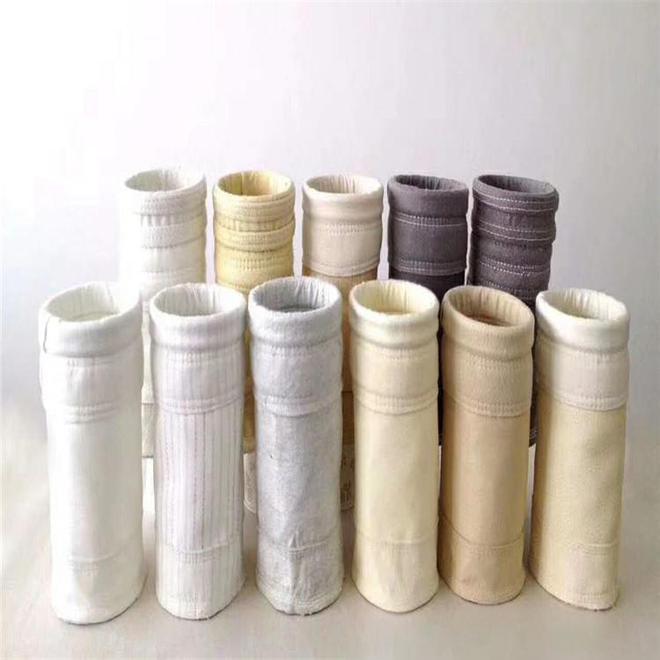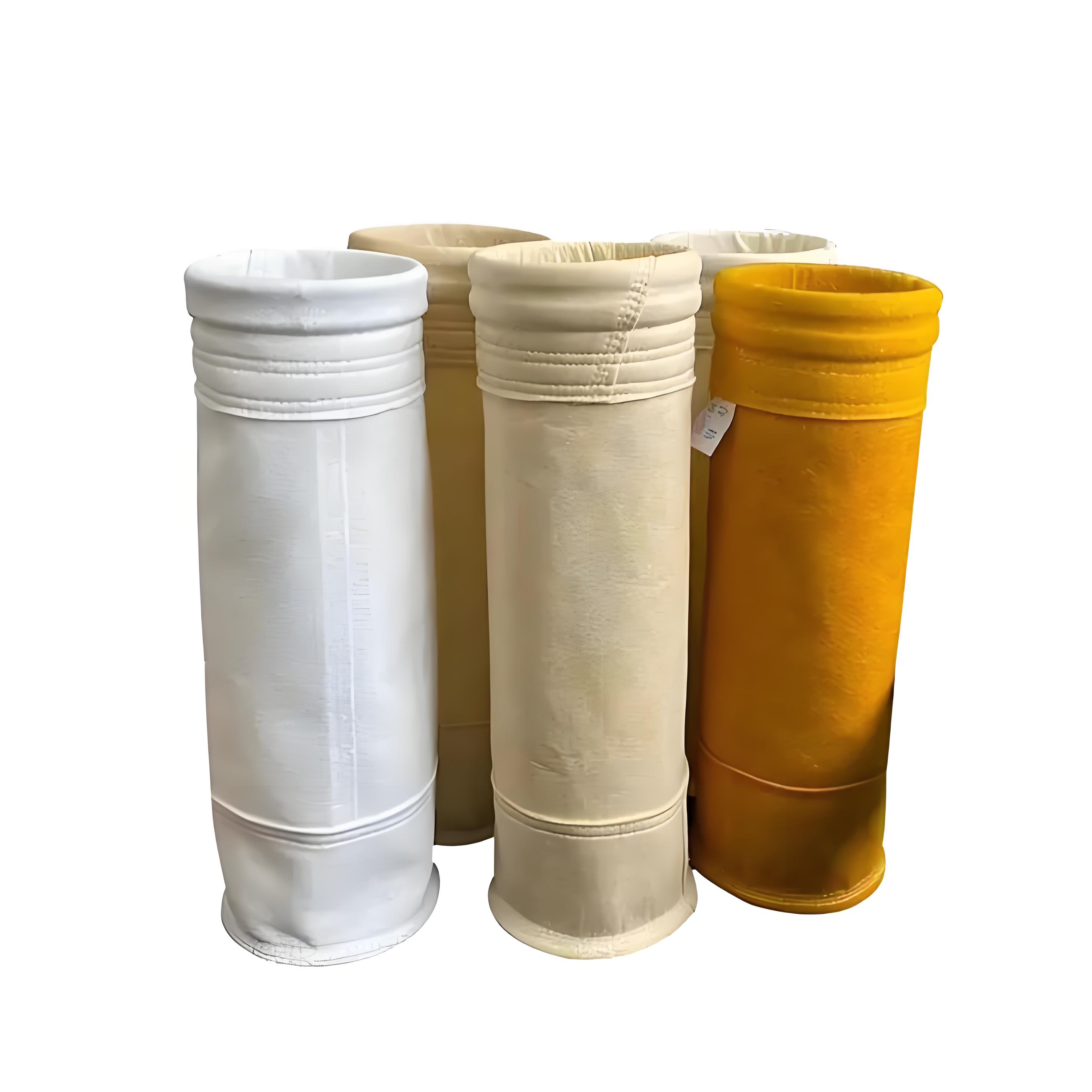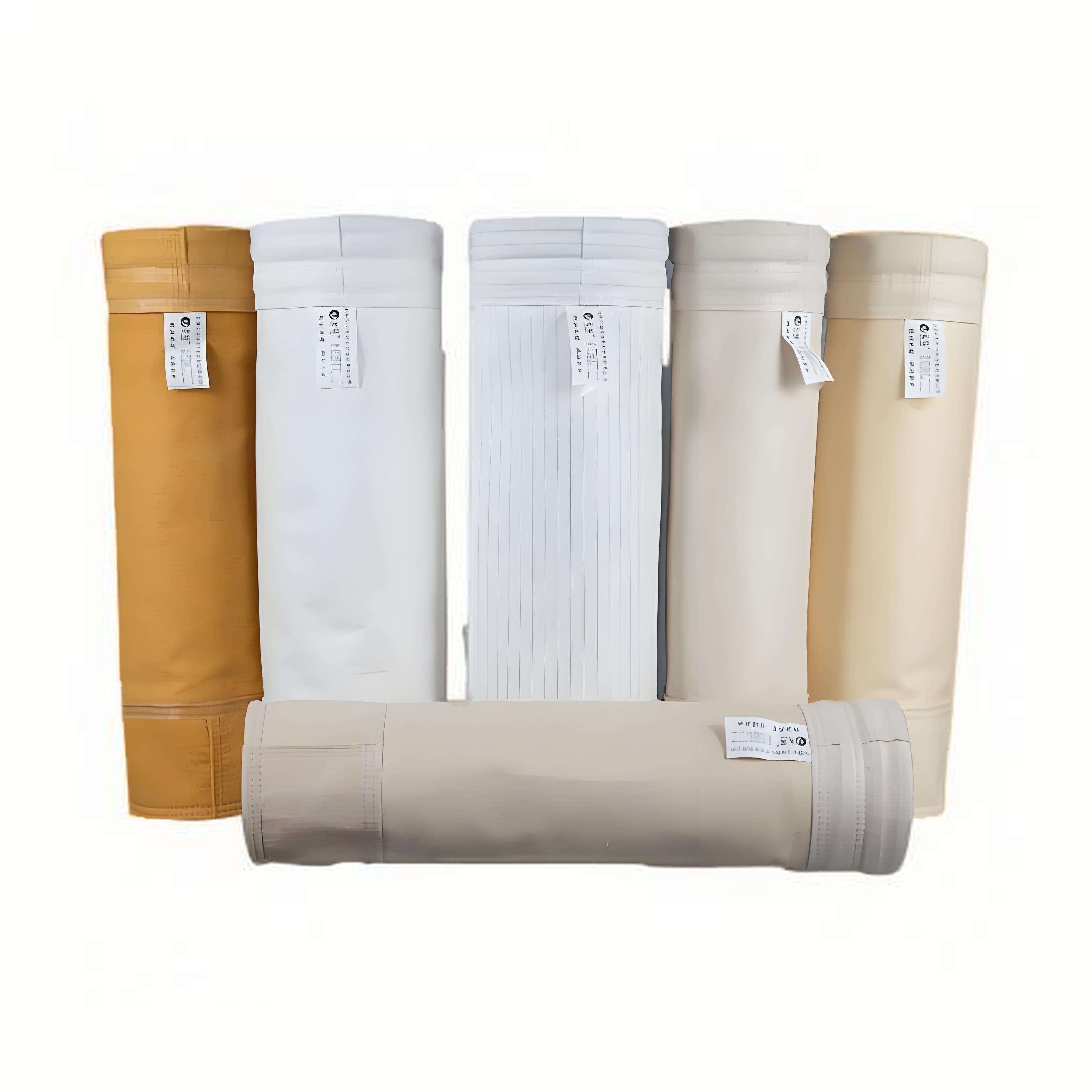Filter bag
-
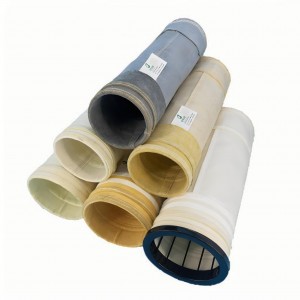
Wide Applications of Filter Bags
In the industrial field, filter bags can be seen everywhere. In the chemical industry, they are used for the filtration of various chemical raw materials and products, ensuring product quality and the smooth progress of the production process. In the food and beverage industry, from the filtration of raw materials to the filtration before filling of finished products, they ensure the safety and taste of food and beverages. In the pharmaceutical industry, which has extremely high requirements for filtration accuracy and hygiene, filter bags are used for the filtration of liquid medicines, removing impurities and microorganisms to ensure the quality and safety of drugs.
In the environmental protection field, filter bags play an important role. In sewage treatment plants, filter bags are used to filter impurities and suspended solids in sewage, laying the foundation for subsequent treatment processes. In industrial waste gas treatment, dust – removal filter bags can effectively reduce dust emissions, reduce pollution to the atmospheric environment, and help achieve environmental protection goals.In daily life, filter bags also quietly serve us. The water purifiers at home may use filter bags to filter impurities in water, allowing us to drink cleaner water. The pour – over coffee filter bags used by coffee lovers can filter out coffee grounds, bringing a pure coffee taste. Even in the kitchen, some filter bags for making soup can filter out the residue in the soup, making the soup more delicious.Although filter bags seem inconspicuous, they play an indispensable role in various fields. With the continuous progress of science and technology and the increasing requirements for filtration, the performance and quality of filter bags are also constantly improving. In the future, they will continue to serve as key guardians in the filtration world, escorting our lives and production. -
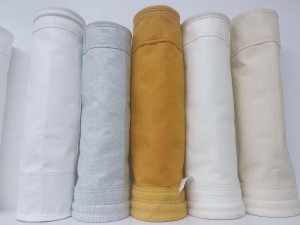
The Ingenious Working Principle of Filter Bags
he working principle of filter bags is mainly based on functions such as screening, interception, and adsorption. Taking liquid filter bags as an example, when the liquid flows from the inside to the outside of the filter bag, particles larger than the pore size of the filter bag will be directly intercepted inside the bag, which is the screening function. For some smaller particles, although they can pass through the pore size of the filter bag, they will be retained inside the filter bag due to the interception of the filter bag fibers and the mutual collision of particles, which belongs to the interception function. In addition, the material of the filter bag itself may have certain adsorption properties for some substances, which can adsorb some tiny impurities and pollutants, further improving the filtration effect.
In the entire filtration system, filter bags work together with filter containers, support baskets, etc. The liquid or gas to be filtered is injected from the top of the filter bag supported by the support basket, making the fluid evenly distributed on the entire surface of the filter bag, avoiding adverse factors such as turbulence. This design can make full use of the filtration area of the filter bag and improve the filtration efficiency. Moreover, the filtered particles are intercepted inside the bag, and the filtered fluid will not be contaminated when replacing the filter bag. Some filter bags are also designed with handles for quick and convenient replacement of filter bags. -
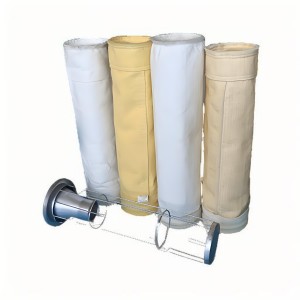
Filter Bags: The Key Guardians in the Filtration World
In the world we live in, filtration is everywhere, from the water and coffee we drink daily to various liquids and gases in industrial production. Among numerous filtration devices, filter bags have become a crucial part of the filtration process due to their unique performance and wide applications.I. A Wide Variety of Filter Bags
Filter bags are made of diverse materials, enabling them to meet various filtration requirements. Common materials include polyester, polypropylene, nylon, glass fiber, FMS (Fluoride Modified Synthetic Fiber), etc.Polyester filter bags have good chemical stability and certain strength and are widely used in general liquid filtration, such as in industrial wastewater treatment and chemical liquid filtration. Polypropylene filter bags have good resistance to acids and alkalis and are often used in some liquid filtration scenarios with strong corrosiveness, such as the filtration of electroplating solutions and chemica raw material liquids. Nylon filter bags have precise pore sizes and can achieve high – precision filtration. They play an important role in the food and beverage industry, such as in the filtration of wine and fruit juice, ensuring the purity of products. Glass fiber filter bags have excellent high – temperature resistance and can be used for the filtration of high – temperature gases, for example, in the high – temperature flue gas dust removal in steel plants and cement plants. FMS filter bags are not only resistant to high temperatures but also highly corrosion – resistant, suitable for some harsh industrial environments.Iln terms of structure and use, filter bags can be divided into liquid filter bags, dust – removal filter bags, air – purification filter bags, etc. Liquid filter bags have different filtration accuracies ranging from 0.5 microns to 300 microns, which can meet various needs from high – precision liquid filtration in the electronics industry to general industrial liquid rough filtration. Dust – removal filter bags are mainly applied in the industrial dust – removal field. In places like cement plants and steel plants, they can effectively capture dust, reduce dust pollution to the environment, and ensure a clean production environment. Air – purification filter bags are commonly found in air – conditioning systems and air purifiers, filtering dust, pollen, bacteria, and other pollutants in the air to provide people with fresh and healthy air. -
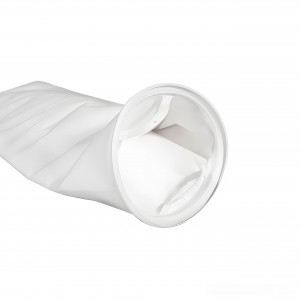
Product Advantages of Water Filter Bags: Superior Performance Making It the Industry’s First Choice
Water filter bags hold a pivotal position in the water treatment market and are highly favored by various industries. This is mainly due to a series of remarkable and unique product advantages they possess.High – efficiency Filtration Performance for Precise Water Purification
One of the core advantages of water filter bags is their outstanding filtration performance. According to different filtration requirements, it can accurately match filter cloths of various pore sizes, efficiently intercepting impurities ranging from large particles in millimeters to fine impurities in microns or even nanometers. For example, in industrial wastewater treatment, the wastewater from some metal processing industries often contains a large number of large – sized metal debris, sediment and other impurities, as well as micron – sized colloidal particles and bacteria and microorganisms generated by chemical reactions. By carefully selecting the appropriate pore – sized filter cloth, water filter bags can separate these impurities of different particle sizes one by one, making the treated. -
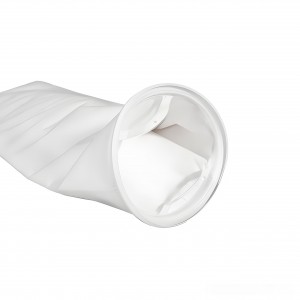
The wide application scenario of water filter bag: protect the water safety of various industries
With its excellent filtration performance, water filter bags have a wide range of applications in many fields, providing a strong guarantee for the water safety and production process in various industries.
In the field of drinking water treatment, water filtration bags are an important line of defense to ensure healthy drinking water for residents. When the water works purify the raw water, filter bags with different precision will be used to remove impurities such as sediment, algae, bacteria and some viruses in the water. After layers of filtration, the raw water meets the drinking water sanitation standards stipulated by the state before it is transported to thousands of households. For example, in some areas where the water source is polluted, by installing high-precision water filter bag equipment, harmful pollutants can be effectively removed from the water, so that residents can drink soothing water.
In industrial production, water filter bags play an irreplaceable role. In the electronics industry, the production process has very high requirements for water quality, and even extremely small impurities can affect the quality of electronic products. The water filter bag can accurately filter out the particles and microorganisms in the water, providing ultra-pure water for chip manufacturing, circuit board cleaning and other processes to ensure the stable performance of electronic products. In the chemical industry, a variety of chemical reactions require pure water as a raw material or reaction medium. The water filter bag can remove impurities and harmful ions in the water, prevent these substances from interfering with the chemical reaction, and ensure the quality of chemical products and the smooth progress of the production process.
In the field of environmental protection, water filter bags perform well in sewage treatment and rainwater collection and utilization. Sewage treatment plants use filter bags to pretreat sewage, remove large particles of impurities, and reduce the burden of subsequent treatment process. In the rainwater collection system, the filter bag can filter out the impurities such as leaves and dust in the rainwater, so that the collected rainwater can be used for non-drinking purposes such as irrigation and car washing, and realize the effective use of water resources.
In addition, in aquaculture, landscape fountains and other fields, water filtration bags also play an important role in maintaining the cleanliness and ecological balance of water bodies. It can be said that the application scenarios of water filter bags are extremely wide, and it is like a silent guardian to protect the quality of water in various industries. -
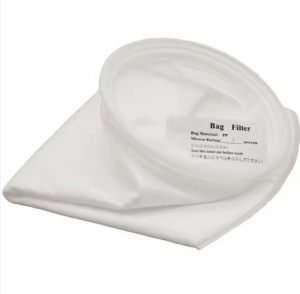
The working principle of water filter bag: the core mystery of efficient purification
In today’s era of pursuit of high-quality water resources, water filter bags, as a key filtration equipment, play a vital role. So, how is the water filter bag to achieve efficient filtration, so that the water quality is purified? There are many subtleties in how it works.
The water filter bag mainly removes impurities in the water by means of physical interception. It is usually made of a filter cloth of a specific material, which has different pore size specifications, from the micron level to the finer level. When the water containing impurities passes through the filter bag, particles, suspended solids, colloids and other impurities larger than the filter cloth aperture will be blocked by the filter cloth and cannot pass through, thus being trapped in the filter bag.
For example, in the treatment of industrial wastewater, the wastewater may contain a large number of metal particles, sediment, and suspended substances formed by various chemical substances. The water filter bag can accurately intercept these impurities, so that the filtered water meets the discharge standard or can be further treated and reused. In the swimming pool water treatment, the filter bag can effectively remove impurities such as hair, dander and dust brought by the human body, ensure that the pool water is clear and clean, and provide people with a safe and comfortable swimming environment.
In addition, the filtration effect of the water filter bag is also related to its structural design. Some filter bags adopt multi-layer structure, and the filter cloth aperture of different layers becomes smaller gradually, forming a gradient filtration mode. In this way, the water flow through the multi-layer filter cloth process, impurities will be gradually intercepted, greatly improving the accuracy and efficiency of filtration. Moreover, the material selection of the filter bag is also extremely critical, high-quality filter cloth material not only has good filtration performance, but also needs to have a certain strength and corrosion resistance to ensure stable operation in different water quality and working environment.
It is based on these physical interception, structural design and material characteristics and other factors, water filter bags can efficiently achieve water purification, becoming an indispensable water treatment equipment in many fields.
-
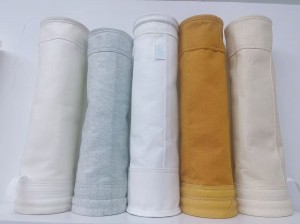
Structural Classification and Filtration Modes of Dust Removal Filter Bags
The structural design of dust removal filter bags directly impacts their filtration efficiency and applicability. Based on cross-sectional shape, they can be categorized as:- Round filter bags: The most common type, cylindrical in shape, specified by diameter × length (D×L). Their simple structure ensures uniform airflow distribution, suitable for most standard dust collectors.
- Flat filter bags: Including rectangular and trapezoidal shapes, specified by perimeter × length (P×L). Flat bags maximize filtration area in limited spaces, improving efficiency in compact dust removal systems.
- Special-shaped filter bags: Unconventional forms like star or polygonal shapes, designed for unique operational needs, with specifications based on specific structural parameters.
In terms of filtration modes, filter bags can be internally filtered or externally filtered:- Internally filtered bags: Dusty gas enters from the inside, and dust is trapped on the inner surface. This design facilitates cleaning but requires regular maintenance to prevent internal dust accumulation.
- Externally filtered bags: Dusty gas enters from the outside, with dust adhering to the outer surface. Often paired with pulse-jet cleaning systems, external filtration offers more thorough dust removal, ideal for high-concentration dust environments.
Moreover, material and structural design must work in tandem. For instance, needle-punched felt or flocked filter fabrics, with their dense pore structures, can initiate sieving early in the filtration process without relying solely on dust layer formation. This design enhances efficiency, particularly for capturing fine, dry, non-fibrous dust.Each structural type and filtration mode has its advantages and limitations. Selection should consider factors such as dust characteristics, equipment space, and cleaning methods to ensure the efficient and stable operation of dust removal systems. -
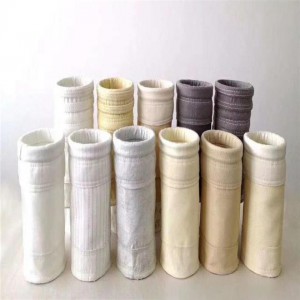
Classification and Innovative Application Trends of Dust Filter Bags
Dust filter bags can be classified in various ways, with different types differing in structure and function to adapt to complex industrial demands.In terms of shape, filter bags are mainly divided into three categories: circular, flat, and irregular. Circular filter bags have a simple structure and wide application, specified by diameter × length. Flat filter bags (e.g., rectangular, trapezoidal) maximize filtration area within limited space, enhancing dust removal efficiency. Irregular filter bags are custom-designed to meet specialized requirements.By filtration method, filter bags can be categorized into internal and external filtration types. In internal filtration, dusty gas is filtered from the inside, with dust adhering to the inner surface of the bag, suitable for low-viscosity dust. In external filtration, gas is filtered from the outside, with dust accumulating on the outer surface, facilitating ash cleaning and commonly used in high-concentration dust environments.With technological advancements, innovative applications of filter bags continue to emerge. For example, membrane-coated filter bags enhance the capture of fine particles by combining a PTFE microporous membrane with a base material while maintaining good permeability, becoming a new choice for high-efficiency dust removal. Additionally, “three-proof” (waterproof, oil-proof, anti-static) filter bags perform exceptionally in handling oily, humid, or flammable dust, widely used in steel, power, and other industries.In the future, dust filter bags will evolve toward higher efficiency, longer lifespan, and 智能化 (intelligentization). Through material innovation and structural optimization, they will continue to drive the green transformation of industrial sectors. -
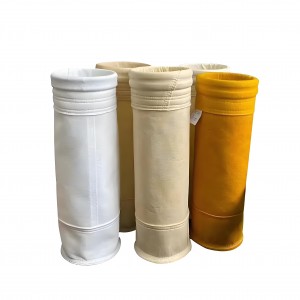
Material Selection and Industrial Applications of Dust Filter Bags
The performance of dust filter bags is closely related to their materials. Different materials exhibit significant differences in temperature resistance, corrosion resistance, and filtration efficiency, requiring careful selection based on specific working conditions.Polyester fiber filter bags are among the most widely used materials. They offer excellent acid and alkali resistance and wear resistance, making them suitable for normal-temperature dust removal in industries such as cement, ceramics, and chemicals. Post-treatment processes (e.g., oil and water repellency, anti-static treatment) can further expand their application range.For high-temperature environments, glass fiber filter bags excel. They can withstand temperatures up to 260°C and exhibit outstanding alkali resistance, commonly used in fields like carbon black production and ore smelting. However, glass fiber bags have poor flexibility and require care to avoid damage from frequent folding.In complex chemical environments, PPS (polyphenylene sulfide) filter bags are ideal. They operate stably at 190°C and tolerate sulfur oxides and wet flue gas, making them particularly suitable for power plant boilers and waste incineration. Additionally, P84 filter bags stand out in industries like chemicals and cement due to their high-temperature resistance (below 260°C) and chemical corrosion resistance.Fumei Si filter bags integrate multiple advantages, including high-temperature resistance (80–230°C), acid and alkali resistance, wear resistance, folding resistance, and easy ash cleaning. They are capable of capturing high-concentration dust and are widely applied in metallurgy, building materials, and other sectors.Through targeted design, different materials of filter bags can meet the diverse needs of various industries, not only improving dust removal efficiency but also extending equipment lifespan and providing strong support for environmental upgrades in industrial production. -
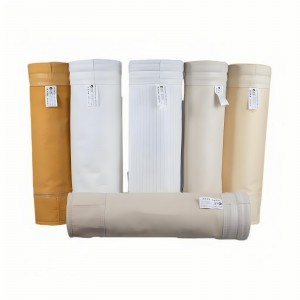
Core Filtration Mechanisms of Dust Filter Bags
As the core component of bag dust collectors, the efficiency of dust filter bags relies on the synergistic effect of multiple filtration mechanisms. When dusty gas passes through the filter material, dust particles are captured through the following processes:First is the sieving effect. When the diameter of dust particles exceeds the pores between filter material fibers or the gaps in the dust layer, the particles are directly intercepted on the surface of the filter bag. New filter bags have larger fiber gaps, resulting in insignificant sieving effects initially. However, as the dust layer gradually forms, this effect becomes increasingly prominent, evolving into one of the primary filtration mechanisms.Next is the inertial impaction effect. For dust particles larger than 1 micron in diameter, high-speed airflow causes them to deviate from the streamline due to inertia, directly colliding with the filter bag fibers and being trapped. This effect is more pronounced at higher gas velocities, but excessive velocity may damage the filter bag and reduce dust removal efficiency.The diffusion effect primarily targets tiny dust particles (smaller than 0.2 microns). These particles undergo Brownian motion due to collisions with gas molecules, increasing their chance of contacting fibers and being adsorbed. Unlike inertial impaction, the diffusion effect is more significant at lower gas velocities, and finer fibers enhance the trapping efficiency.Additionally, gravitational sedimentation and electrostatic effects play auxiliary roles. Large, high-density dust particles settle naturally under gravity. When dust and filter bag materials carry opposite charges, the adsorption force increases, improving dust removal efficiency but potentially complicating ash cleaning. Conversely, identical charges reduce adsorption but facilitate dust detachment.The combined action of these mechanisms enables dust filter bags to efficiently purify air, meeting the environmental protection requirements of various industrial scenarios. Optimizing the material, structure, and gas velocity of filter bags can further enhance their performance, achieving more stable dust removal results. -
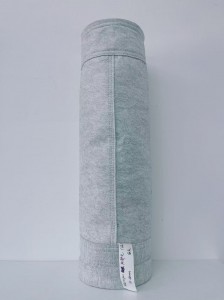
The application fields of polyester filter bags
The application fields of polyester filter bags are as follows:
-
Heavy Industries
- Widely used in steel, power generation, cement, chemical, and smelting industries for dust removal in their production processes.
- Suitable for capturing and filtering particulate matter generated in high-temperature and high-pressure industrial environments.
-
Environmental Protection Equipment
- Integral components of bag dust collectors, which are critical for treating industrial flue gases and ensuring compliance with environmental regulations.
- Effective in removing pollutants from exhaust streams in factories and manufacturing plants.
-
Petroleum and Mining
- Used in oil refining processes and mining operations to filter out impurities, ensuring product quality and reducing environmental impact.
-
Waste Incineration
- Applied in waste-to-energy facilities to filter emissions and control harmful particulate matter during incineration.
-
Pharmaceutical and Food Processing
- Utilized in these industries for precise filtration of powders, granules, or liquids, maintaining hygiene and product purity.
-
General Filtration Needs
- Found in various other sectors requiring air or liquid filtration, such as woodworking, textiles, and mechanical manufacturing, where dust or debris must be efficiently captured.
In summary, polyester filter bags are versatile and widely adopted across industries due to their durability, filtration efficiency, and adaptability to diverse operational conditions. -
-
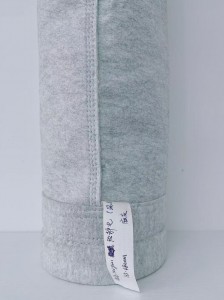
Polyester Filter Bags
Based on the provided search resources, here is a comprehensive summary of polyester filter bags:1. Materials and Characteristics
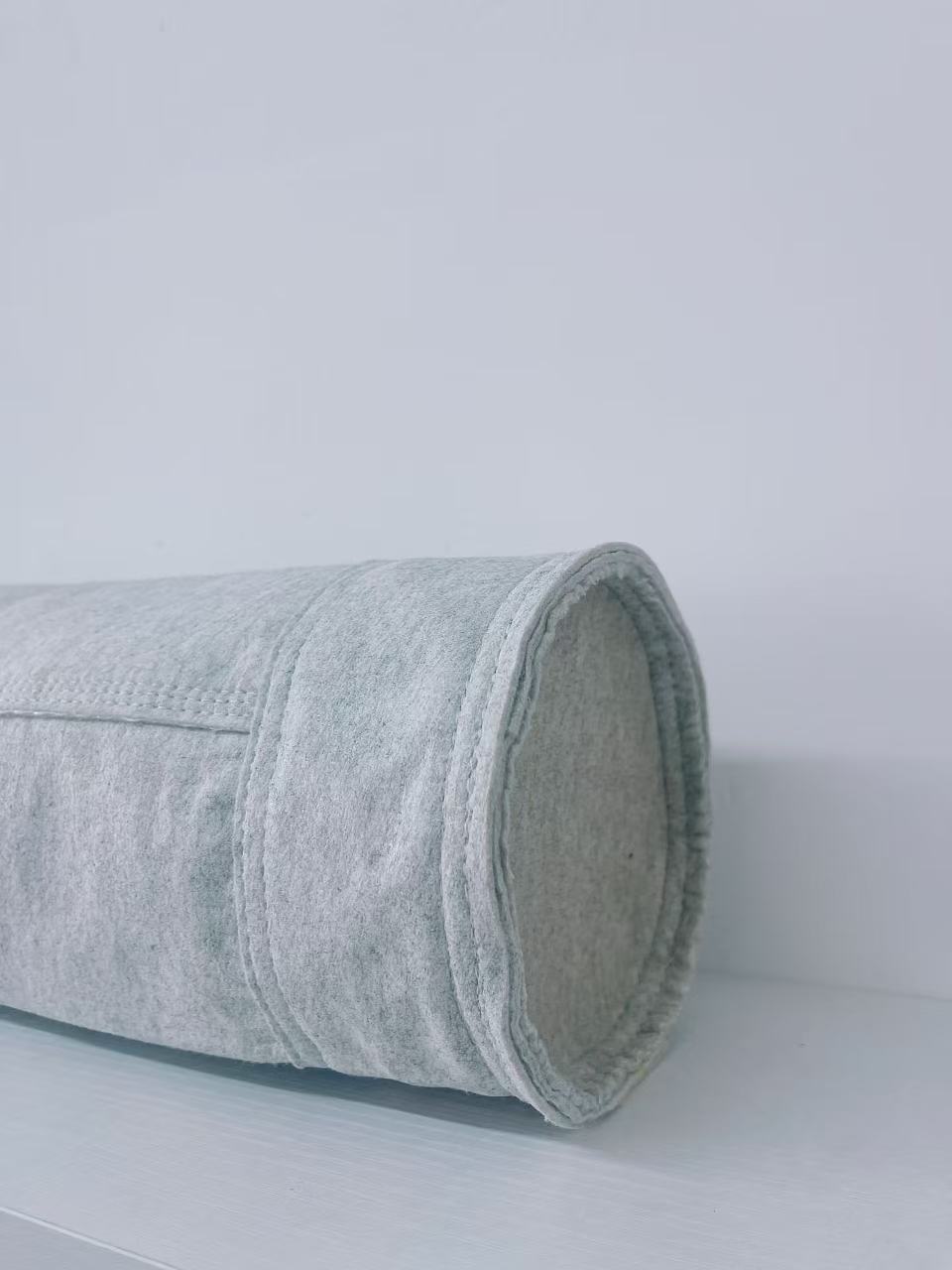
- Materials: Polyester filter bags are primarily made from polyester staple fibers or filaments, processed through needle-punching, weaving, or other techniques. Some products undergo post-treatment such as heat setting, singeing, calendering, PTFE impregnation, or water/oil repellent finishes to enhance performance.
- Key Features:
- Excellent Filtration: High porosity and 透气性 ensure efficient dust collection (e.g., 208 polyester flannel bags achieve a dust removal rate of 99.99%).
- Durability: High abrasion resistance and long service life; smooth surfaces facilitate easy ash cleaning, reducing dust adhesion and operational resistance.
- Temperature Resistance: Continuous operating temperature typically ranges from 80°C to 130°C (depending on the product model), with a short-term peak temperature of up to 150°C.
- Chemical Tolerance: Moderate resistance to acids and alkalis, suitable for various industrial environments.
2. Classification and Types
- By Raw Material:
- Polyester Staple Fiber Filter Bags: Good breathability, suitable for general dust removal.
- Polyester Filament Filter Bags: Higher strength and longer lifespan.
- By Weaving Method:
- Woven Filter Bags: Tightly structured, suitable for high-temperature and high-pressure environments (e.g., 208 polyester woven filter bags).
- Needle-Punched Felt Filter Bags: High porosity and superior filtration efficiency, making them the mainstream choice.
- By Function:
- Anti-Static Filter Bags: Incorporate anti-static fibers to prevent electrostatic accumulation, ideal for explosive dust environments.
- Water and Oil Repellent Filter Bags: Surface-treated to resist water and oil penetration, suitable for wet or oily dust.
- Membrane Filter Bags: Combined with microporous membranes to enhance capture of fine particles.
3. Technical Parameters (Typical Product Example)
- Fiber Composition: Polyester staple fiber
- Base Cloth Composition: Polyester filament
- Grammage: 500g/m²
- Thickness: 1.70mm
- Tensile Strength: Warp ≥1200N/5cm, Weft ≥1500N/5cm
- Air Permeability: 14 m³/㎡·min
- Continuous Operating Temperature: 130°C (some products specify 80°C; confirm with specific specifications)
- Short-Term Peak Temperature: 150°C
4. Application Fields
Polyester filter bags are widely used in:- Heavy Industries: Dust removal systems in steel, power, cement, chemical, and smelting industries.
- Environmental Equipment: Bag dust collectors for treating industrial dusty gases.
- Other Fields: Petroleum, mining, waste incineration, pharmaceuticals, food processing, and other scenarios requiring filtration.
5. Usage Precautions
- Installation and Maintenance:
- Ensure smooth water distribution systems and uniform filter media 铺装.
- Avoid overly loose or tight filter bags to prevent dust accumulation or damage.
- Regularly inspect filter bags for wear and replace damaged ones promptly.
- Temperature Control:
- Avoid prolonged operation above the rated temperature; short-term peaks should not exceed 150°C.
- In high-temperature and high-humidity environments, use water/oil repellent or membrane filter bags to prevent condensation and clogging.
- Airflow Adjustment:
- Ensure uniform air intake to avoid localized impact damage to filter bags.
- For high-flow conditions, equip automatic flow control systems to stabilize gas volume.
6. Conclusion
Polyester filter bags are a mainstream choice in industrial dust removal and filtration due to their excellent filtration efficiency, durability, and adaptability. Selection should consider specific working conditions (e.g., temperature, dust properties, humidity), and proper installation and maintenance are crucial to ensure efficient operation and extend service life.
